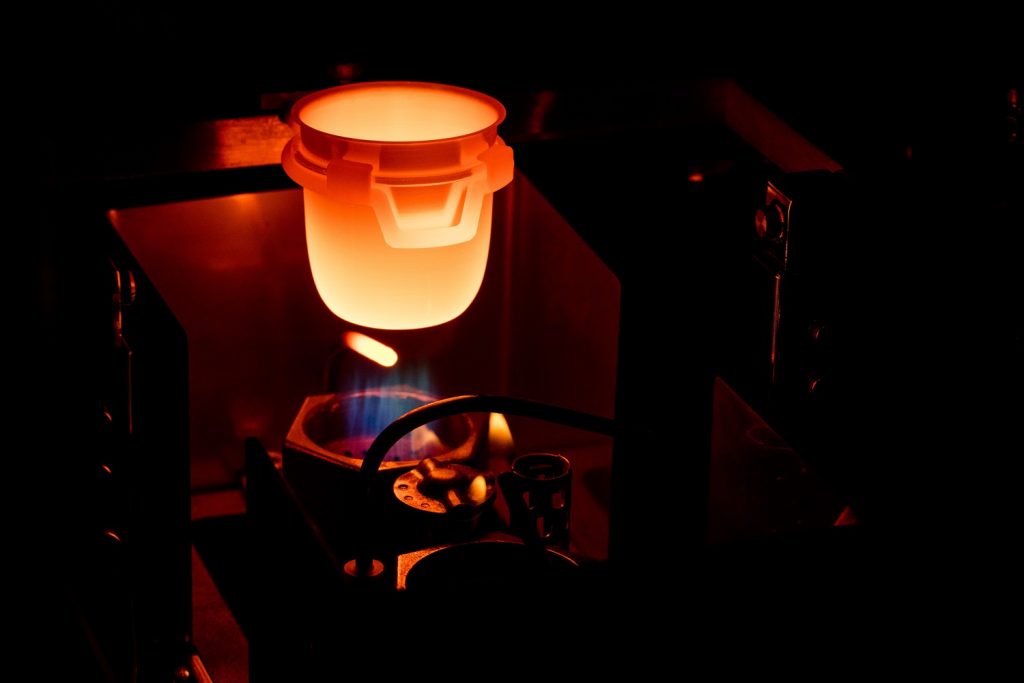Conditions to Avoid with Platinum Products for General Labware Care
Platinum care is a vital, yet often overlooked, process for x-ray fluorescence (XRF) and inductively-coupled plasma (ICP) sample preparation. Analysts routinely subject platinum labware to extreme temperatures for extended periods of time. These harsh thermal conditions are further complicated by the challenging reactions that occur between sample materials and borate agents, and between minerals within samples and the platinum labware itself.
These challenging conditions can significantly impact the service length of platinum products. Gradual thermochemical degradation will also reduce the reliability of sample preparation over time, impacting the accuracy of subsequent spectroscopic measurements. Introducing a robust labware care cycle into your sample preparation process will extend the service life of platinum labware and reduce measurement errors associated with platinum contamination.

In this blog post, XRF Scientific outlines some of the common agents of concern for platinum labware care and performance.
Platinum Labware Care: Conditions to Avoid
The detrimental impacts of different substances on platinum labware varies significantly. In some instances, metals within sample materials will react with the molecules in a platinum crucible to form surface compounds that only mildly limit the product’s usability. In others, chemical compounds will cause crucibles to fracture under high temperatures, causing total component failure and potential damage to fusion furnaces due to leaking molten materials. The first rule of platinum care is to avoid using your labware in reactive conditions.
Chromium (Cr), cobalt (Co), copper (Cu), iron (Fe), manganese (Mn), nickel (Ni), and zinc (Zn) often leach into platinum crucibles under elevated temperatures. Rather than reacting with the alloy to form mechanical weaknesses, these elements tend to leach out of the crucible and contaminate other samples. There is evidence, however, that very high concentrations of these minerals or extended peak temperature usage in the presence of even low levels will cause small cracks to propagate into the product.
These flaws can be identified during a standard labware care cleaning cycle, using a magnifying glass or microscope to inspect for cracks that could be indicative of contamination.
Antimony (Sb), bismuth (Bi), lead (Pb), silver (Ag), and tin (Sn) will alloy with platinum at relatively low temperatures. They often corrode the base and inner wall of platinum crucibles used for ashing, forming surface heterogeneities that reduce the melting point of localized spots on the crucible base and inner wall. When subjected to fusion temperatures, these spots can melt and cause irreparable holes in the crucible.
Arsenic (As), phosphorous (P), silicon (Si), sulfur (S), and silicon carbide (SiC) are extremely hazardous to the chemical-mechanical integrity of platinum products. These elements can rapidly attack the grain boundaries of pure platinum and platinum alloys, causing crucibles to crack and fall apart. This is the most common form of premature labware failure in sample fusion. Total mechanical failure of platinum labware due to process contamination can be caused by just micrograms (μg) of undesirable material.
Platinum Labware Care with XRF Scientific
XRF Scientific is a world leader in the design and supply of platinum labware for sample fusion and preparation. We understand the unique challenges of maintaining optimal platinum products and have prepared an extensive range of platinum care tools to help you maintain the performance of your surface preparation methods.
If you have any more questions, please do not hesitate to contact us directly.









